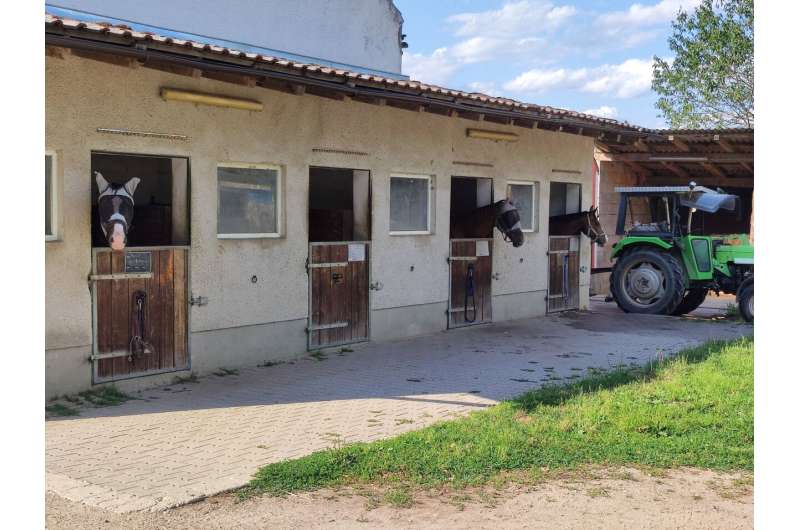This article has been reviewed according to Science X's editorial process and policies. Editors have highlighted the following attributes while ensuring the content's credibility:
fact-checked
peer-reviewed publication
proofread
Research team identifies human odorant receptor for 'horse stable' odor, with implications for food testing

Para-cresol is an aromatic compound with a strong horse stable-like odor. It contributes to the off-flavor of some foods, but it is also detectable as a characteristic odorant in whiskey and tobacco, as well as in the urine of various mammals.
A research team led by the Leibniz Institute of Food Systems Biology at the Technical University of Munich has now discovered which odorant receptor humans use to perceive para-cresol. The work is published in the journal Food Chemistry.
Para-cresol (4-methylphenol) is formed during the microbial degradation of certain amino acids, but also during thermal degradation processes. As a result, it is present in various foods, where it can contribute to off-flavors in the aroma of white pepper, cocoa, rapeseed or olive oil, among others. In addition, para-cresol has long been known to attract insects such as mosquitoes, tsetse flies and horseflies, as well as horses and cattle.
A research team led by Dietmar Krautwurst from the Leibniz Institute in Freising has now succeeded for the first time in identifying the human odorant receptor for para-cresol using a cellular test system. "It was crucial that we had access to the pure substance available thanks to the excellent preparative and analytical work at our institute," reports first author Franziska Haag. "As we discovered, commercially available para-cresol is contaminated with an isomer that would have affected the results."
Over 600 human odorant receptors tested
The amounts of pure para-cresol obtained by high-performance liquid chromatography were sufficient to perform an extensive bidirectional receptor screening. The researchers tested which of more than 600 human odorant receptor variants responded to para-cresol.
The screening revealed that the OR9Q2 receptor was the only one that responded to physiologically relevant concentrations of the substance. The team then investigated whether the receptor also responded to other odorants. To do this, they tested 176 substances known as key food odorants, which play an important role in shaping the aroma of food. Of these, only one other odorant, the structurally similar 4-ethylphenol, was able to significantly activate the receptor.
The research team then examined the concentration-response relationships between para-cresol and animal odorant receptors that are orthologs to the human receptor. The test results showed that the mouse receptor responded to para-cresol in a similar way to the human receptor. The cow receptor tested even showed significantly higher sensitivity to the substance.
According to the team, the result is consistent with earlier findings that para-cresol acts as a pheromone in cows and exerts a sexual attraction on the animals even at very low concentrations.
The 'para-cresol receptor' is highly selective
"The high selectivity of receptor OR9Q2 for para-cresol thus appears to be evolutionary conserved, emphasizing its dual importance: on the one hand, as a sensor of food and stimulant odors, and on the other hand, as a receptor for a signaling molecule that plays a role in the communication between animals of the same species," says principal investigator Dietmar Krautwurst.
"The receptor fills a gap in the recognition spectrum of the phylogenetically older human odorant receptor OR2W1, which detects a wide range of structurally different odorants, but not para-cresol."
"In addition to these exciting findings, the new knowledge could be used in the future to develop biotechnologies that can be used to quickly and easily test the sensory quality of food along the entire value chain."
More information: Franziska Haag et al, The multi-faceted food odorant 4-methylphenol selectively activates evolutionary conserved receptor OR9Q2, Food Chemistry (2023). DOI: 10.1016/j.foodchem.2023.136492
Journal information: Food Chemistry
Provided by Leibniz-Institut für Lebensmittel-Systembiologie





















